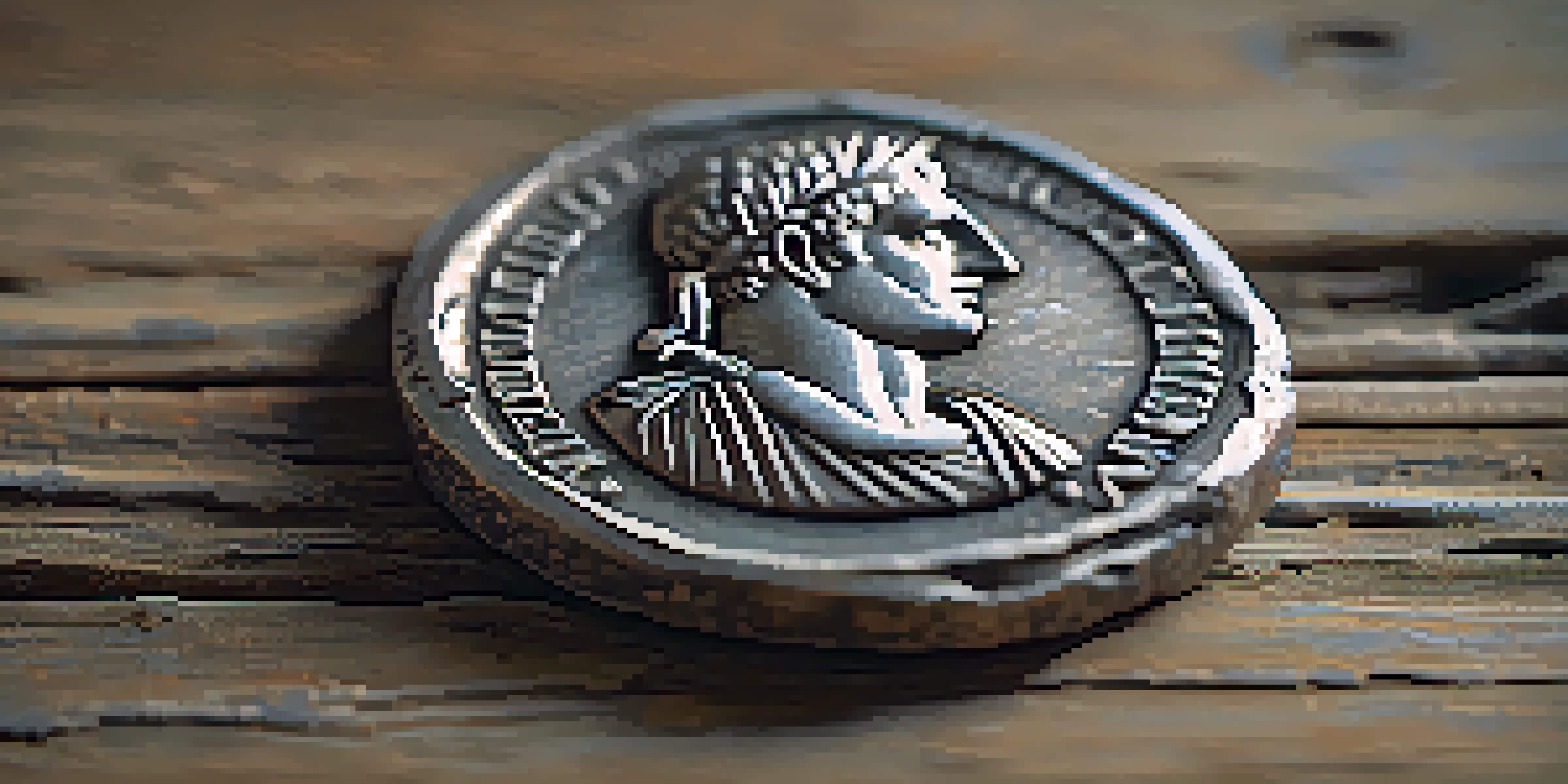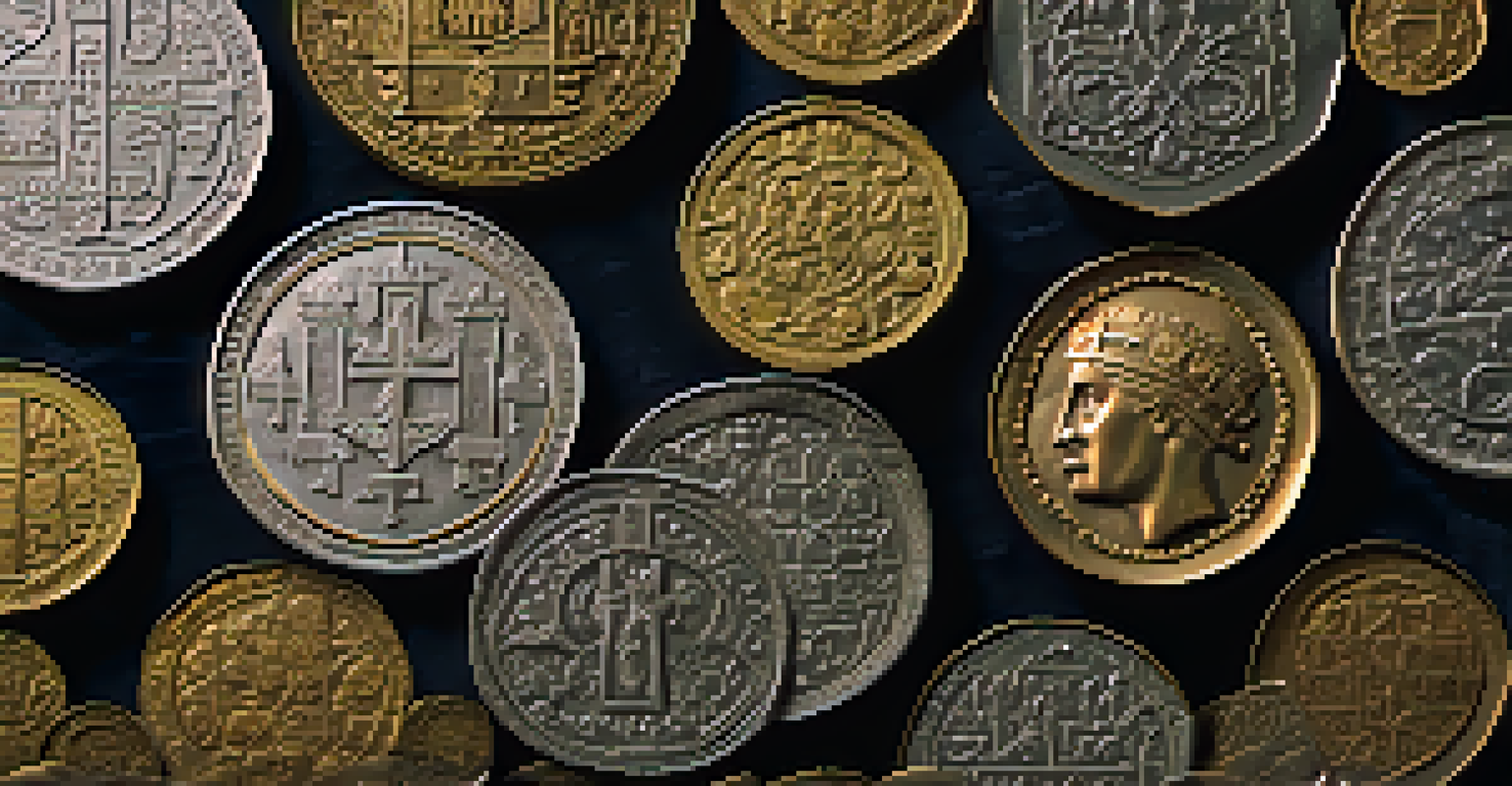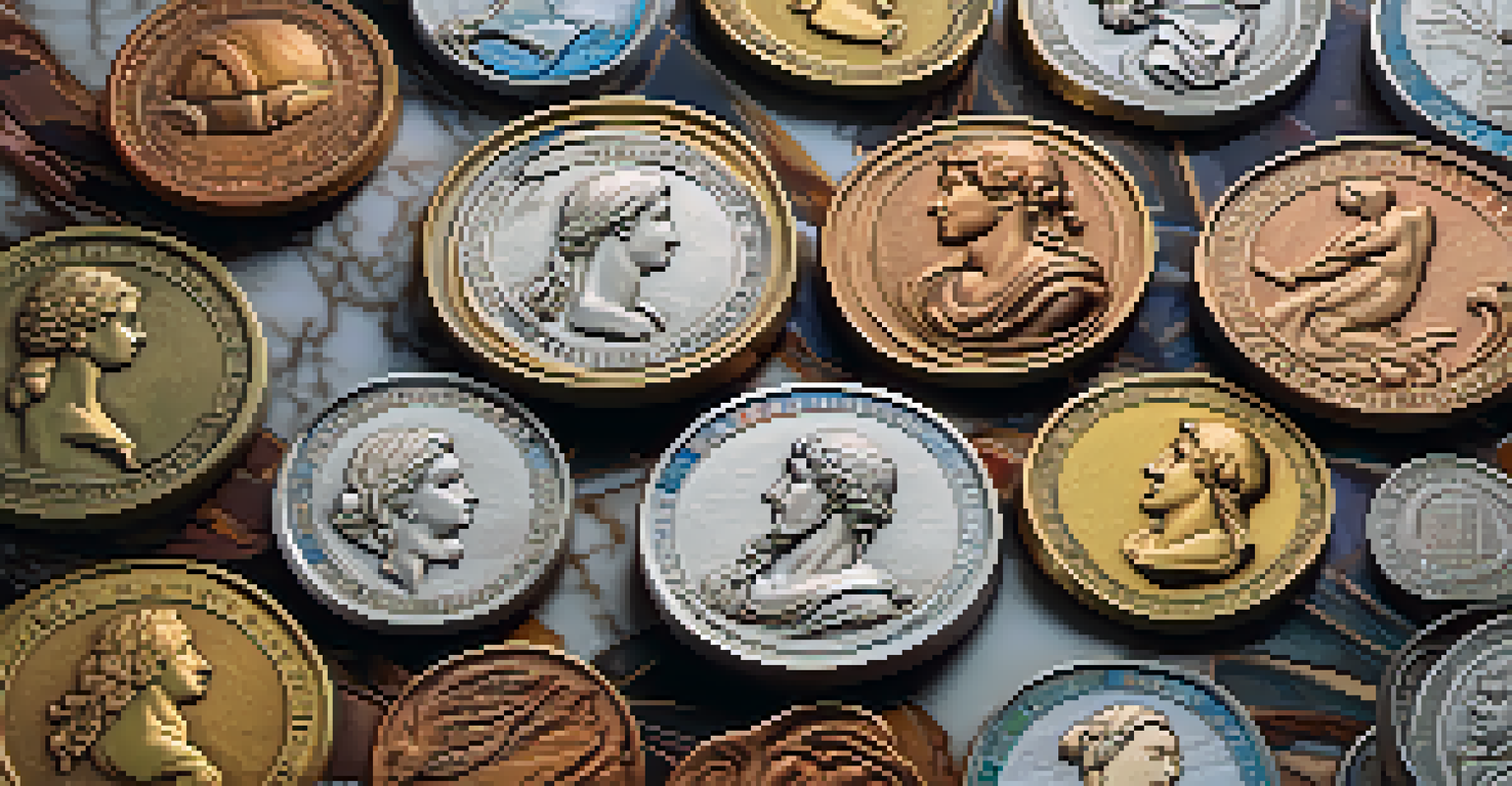Collecting Coins by Era: Understanding Historical Context

Why Collect Coins by Era? The Historical Significance
Collecting coins by era is not just a hobby; it’s a way to connect with history. Each coin tells a story, reflecting the culture, economy, and politics of its time. For example, a Roman denarius can transport you to ancient Rome, revealing insights into its society.
Coins are a sort of historical record, a tangible memory of human activity that has long since passed.
Understanding the historical context behind each era enhances your appreciation of the coins in your collection. It allows you to see beyond the metal and design, diving deep into the stories and events that shaped those times. This adds layers of meaning to your collecting experience.
Moreover, coins from specific eras can increase in value as historical interest grows. Collectors who invest in coins from pivotal moments, such as the American Revolution or the Industrial Revolution, may find themselves holding pieces that not only celebrate history but can also appreciate significantly over time.
The Ancient Era: Coins as Cultural Artifacts
The ancient era, ranging from around 600 BC to 500 AD, is where coin collecting truly began. The first coins, minted in Lydia, served as a standardized form of currency, changing trade dynamics and economic systems. Collecting these early coins provides a glimpse into the origins of commerce and societal development.

Coins from ancient civilizations—like Greek drachmas or Roman sestertii—offer rich narratives about their respective cultures. For instance, the imagery on these coins often depicted gods, leaders, and significant events, reflecting the values and beliefs of those societies. Owning a coin from this era is akin to holding a piece of history in your hand.
Coins as Historical Connectors
Collecting coins by era allows enthusiasts to connect with history, revealing stories of culture and events from different time periods.
As you explore this era, consider the broader implications of coinage on societal evolution. Understanding how these coins facilitated trade, influenced politics, and even spread ideas can deepen your appreciation for them as more than just collectibles.
The Medieval Era: Coins and Feudal Power Structures
The medieval era, spanning roughly from the 5th to the late 15th century, saw coins evolve alongside feudal systems. Kings and lords minted coins to assert their power, often featuring their likenesses and heraldry. This era's coins serve as fascinating reflections of political authority and territorial claims.
The study of coins is the only study of the past that is not based on speculation; every coin has a history.
During this time, coin design became a medium for propaganda, with imagery intended to convey strength and legitimacy. For example, the Anglo-Saxon penny showcased intricate designs that communicated wealth and stability. Collectors can enjoy not just the aesthetic beauty but also the political narratives these coins encapsulate.
Additionally, the medieval period saw the introduction of various denominations and trading systems. Understanding these nuances can enhance your collection, allowing you to appreciate the significance of each coin within its historical context.
The Renaissance: A Flourishing of Art and Currency
The Renaissance era, from the 14th to the 17th century, marked a rebirth of art, culture, and humanism, reflected in the coins of the time. Minted in city-states like Florence and Venice, these coins often featured stunning artwork, turning currency into collectible art pieces. Collectors are drawn to the exquisite designs and craftsmanship of Renaissance coins.
Coins from this period often celebrated notable figures and events, such as the Medici family or the exploration of new worlds. By collecting these coins, enthusiasts can gain insight into the values and aspirations of the society that produced them. Each coin is a testament to the artistic and intellectual achievements of the time.
Cultural Significance in Design
Coins from various eras showcase the artistic and political narratives of their time, reflecting societal values and power structures.
Moreover, the Renaissance brought about advancements in minting techniques, leading to more standardized and secure currencies. This evolution serves as a fascinating study for collectors interested in the progress of currency and trade.
The Industrial Revolution: Coins Reflecting Change
The Industrial Revolution, spanning the late 18th to the early 19th century, transformed economies and societies, and coins from this era reflect those monumental changes. As industries grew, so did the demand for currency that represented not just wealth, but progress and innovation. Collecting coins from this period offers a unique perspective on the economic shifts occurring at the time.
Coins such as the British penny or the American half dollar often featured symbols of industry, like steam engines or factories. These designs celebrated the technological advancements that were reshaping daily life. By studying these coins, collectors can appreciate how currency mirrored societal progress.
Additionally, the introduction of mass production techniques in coin minting allowed for greater variety and accessibility. This period was pivotal in shaping modern currency systems, making it a rich area for exploration for collectors interested in the evolution of money.
The 20th Century: Coins in Times of Turmoil
The 20th century was marked by significant global events, and coins from this era often reflect the tumultuous times. From World Wars to economic crises, each coin tells a story of resilience and change. Collecting coins from the 20th century can provide a lens through which to view the impact of these events on everyday life.
For example, coins like the wartime nickel, made of silver during shortages, hold historical significance beyond their face value. They serve as reminders of the sacrifices and struggles faced by societies during times of crisis. This connection to history can be deeply rewarding for collectors.
Evolving Trends in Collecting
The future of coin collecting is being shaped by digital currencies and online communities, transforming how enthusiasts engage with the hobby.
Additionally, the 20th century saw innovations in coin design and minting processes. Understanding these advancements can enhance your appreciation for modern coins and their role in a rapidly changing world.
The Future of Coin Collecting: Trends and Insights
As we move into the future, the landscape of coin collecting continues to evolve. With the rise of digital currencies, collectors may find themselves exploring new types of currency, including cryptocurrencies. This shift could redefine what it means to collect coins and their historical significance.
Moreover, the accessibility of online resources and communities has transformed how collectors engage with one another. Virtual auctions and forums provide platforms for enthusiasts to share knowledge and trade coins, making the hobby more inclusive. This collaborative spirit enriches the collecting experience.

Looking ahead, understanding historical context will remain crucial for collectors. As new coins are minted and old ones are retired, the stories behind them will continue to shape our understanding of currency and its role in society.